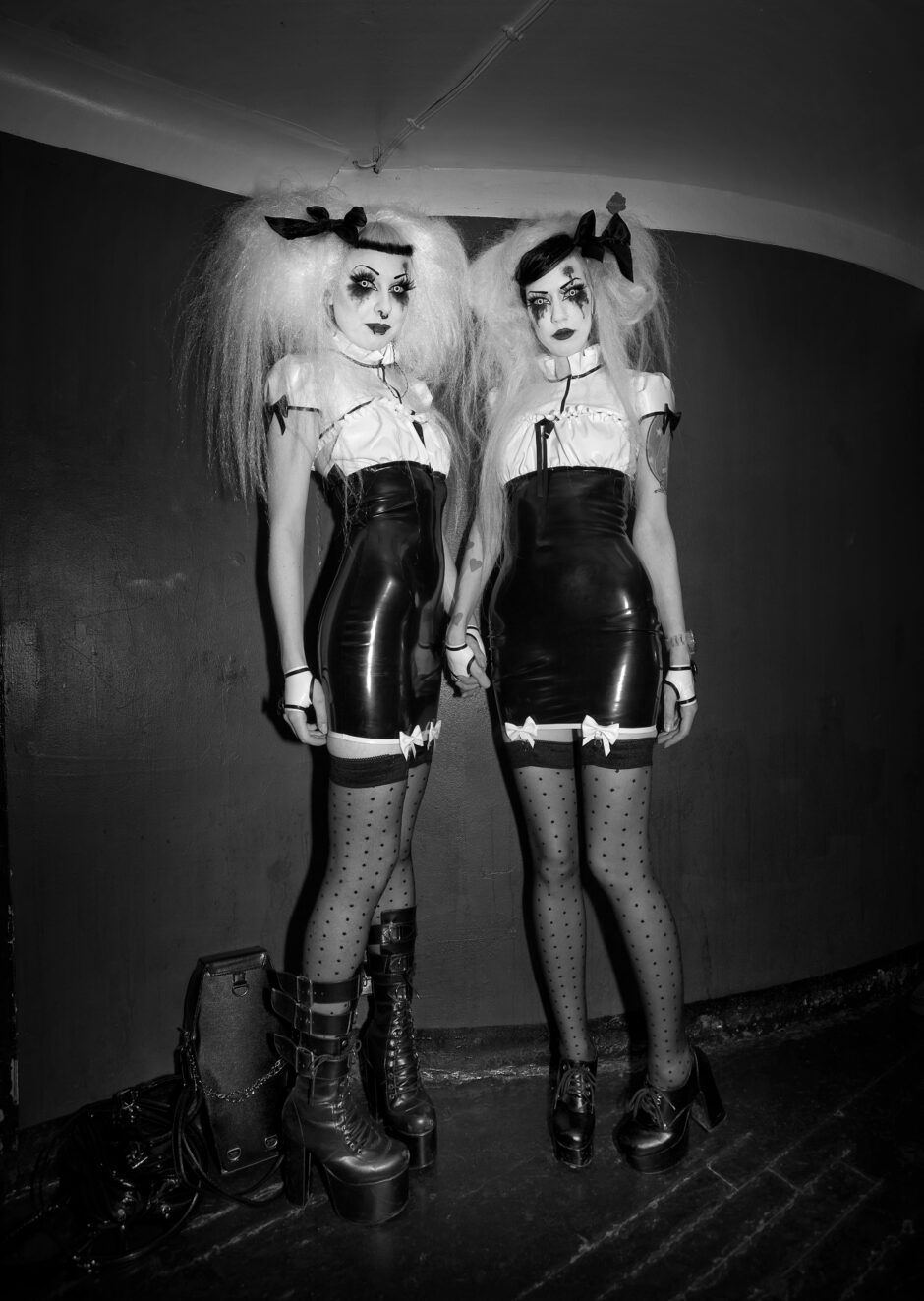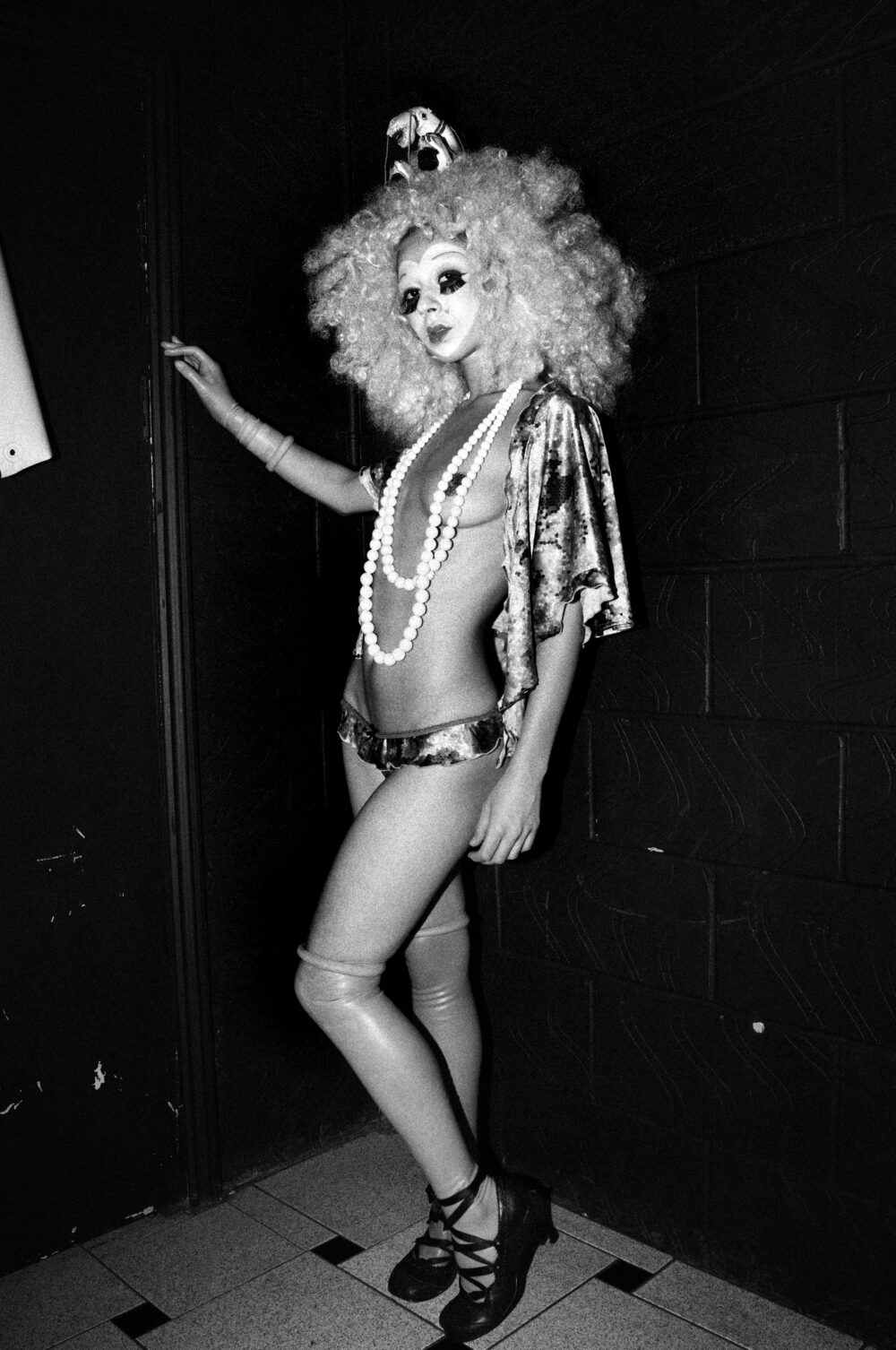DEREK RIDGERS: AN EXPLOSION OF STREET STYLE CREATIVITY
Great Britain used to be a country of tribes, vibrant youth sub-cultures including Punks, Post-punks, Cyber-punks, Gothic punks, Mods, Hard mods, Trojan skins, Ska, Reggae, Acid House, Happy Hardcore, Blitz Kids, New Romantics, Hip-Hop heads and Ravers brought an explosion of creativity to the City and suburbia. Thank goodness Derek Ridgers was there to obsessively document these cultural movements.
Subcultures never used to be flippant fashion fetishes bought off the shelf at Phillip Green owned high street retailers, they were a way of life for their kinship clans. They inspired intense loyalty and a flickering glimmer of the hope for a better world. Through his street portrait photography (as well as the occasional celebrity shot) Derek’s street portrait photography captures the élan of youth magnificently.
When did you first know that you wanted to be a photographer ?
The truthful answer is, I suppose, the first time I saw the film Blow-Up. In 1967 when I was 16. But I perhaps didn’t actually know it at the time. At that point, I was still at school and I thought I wanted to become a painter. And it was 15 years after I saw that film before I first started to earn a living as a photographer. But, looking back now, I think that film planted the seed.
Can you tell us about your process and do you have any rules?
My process of documentary photography involves watching from the margins, quietly observing things until I see something or someone worth photographing. Simply looking at what’s going on and trying to find people who look photogenic or who draw the eye.
My process of shooting commissioned portraits is a little different to that.
In any given situation, I try to figure out what most people would do and then I try to do something different. I’d be lying if I said it always works out that way, but that at least is my aim.
I don’t really have any photographic rules. IMHO the best rule is that there are no rules. But I suppose do have a few rules for my personal behaviour. I try to treat everyone as I’d wish to be treated myself. I’m always polite and I do my best, when talking to my prospective subjects, to tell them the absolute minimum about my intentions because I don’t want them second guessing me. “Do you mind if I take your photograph” is usually as much as I will ever say. If they don’t ask me anything else, I keep silent.
In your photographs you’ve captured some great youth cultures and characters with bags of individuality. How is the youth culture scene in 2020? Is it still possible to capture such interesting characters?
It certainly is. The truth is that there is a lot more of everything in 2020 than there was at almost any other point in my lifetime and youth culture is big part of it.
But…
Youth culture no longer concentrates itself in a handful of easily categorisable, media friendly groupings. And it can no longer be found in a few hip, subterranean nightclubs (and most of the locations that used to host those nightclubs no longer exist anyway).
Youth culture is everywhere now, all around us, all over the world. And one doesn’t even have to leave the confines of one’s own home to see it. The evidence is out there on Instagram.
What are the qualities that make you want to photograph a subject and what were their reactions to being photographed?
To the first part of your question – I look for anyone that is not at all like me. The more unlike me, the better.
To the second part, the key word is “were”.
Once upon a time, people were more often than not flattered to be asked to be photographed and, I guess, I might even sometimes have been the first person, outside of their own family, to have photographed them.
These days, because everyone has some sort of a camera with them all of the time, the idea of being photographed by an old geezer in the street seems less appealing.
Nevertheless, I still like to try to do it. It’s getting harder though.
Did you ever find it difficult approaching your subjects?
Yes.
I feel the same sort of apprehension most people feel approaching someone they don’t know. My camera does obviously give me some degree of legitimacy and I admit that it allows me into some situations that I’d never dream of getting into without it.
The interesting thing is that I’ve often noticed the amount of apprehension I feel about approaching someone is inversely proportional to the degree to which I really need to get the photograph.
For instance, if I see a tough looking group of young men – bikers maybe or skinheads – it would be so easy to think to myself “maybe I’ll leave it today, they probably don’t want to be photographed right now or maybe they’ll be aggressive”. But nothing worth having comes easy, so I always force myself.
And I’ve found, over the years, that if you approach people politely and seem sincere, then they’ll usually respond positively. Probably nine times out of ten.
The only problem is that you can’t tell when it will be that one time out of ten either, when they won’t respond positively. So one does have to be a bit sensible in some circumstances.
Did having a camera in your hand give you a free passport into these youth culture scenes or were people sceptical at first?
In the past, almost everyone was a little sceptical of me to begin with. But because I’m polite, softly spoken and don’t get in the way, the scepticism soon falls away.
How quickly it falls away, is the key point. In moments sometimes and, with others, it can take a little longer.
Did you feel like an outsider observing from the margins or did you emerge yourself in any particular culture?
My position has always been one of the outsider. That’s a position I’ve always accepted and always been happy with. I’ve never attempted to ingratiate or inveigle myself with any of my subjects.
If you were to look at any of my contact sheets from 35 or 40 years ago you would often see skinheads at one end of a roll and teddy boys or New Romantics at the other. So my approach allowed a degree of personal flexibility.
If you look at Gavin Watson’s early photographs of skinheads or Graham Smith’s photographs of the nascent New Romantics scene, those photographs are quite different to mine because those photographers were very much a part of the situations they were photographing. I could never have done that, even if I’d wanted to. I just don’t have the insider gene. I’m one of life’s permanent outsiders in everything, not just photography.
And I never thought being friends with my subjects would be an advantage anyway. And that goes for all of my photography, not just my documentary work.
There’s one photographer, of my vintage who, listening to him talk, was bosom buddies with almost everybody he ever photographed. I just don’t want to take photographs from that kind of perspective. Besides which, I just don’t have the time or the energy to have so many close friends.
Did you have a particular favourite youth culture to photograph?
Probably the most obviously photogenic group were the skinheads although, as we all know, they came with certain concomitant difficulties. If it were not for those difficulties, it would definitely be the skinheads.
Plus of course, if it were not for them, I probably would never have had much of a career as a photographer in the first place.
So I guess it would have to be the skinheads.
What is your favourite photograph that you’ve produced?
This is a bit like asking someone to pick their favourite child. Talking of which, all my favourite photographs are ones of my own kids as children.
I don’t suppose that’s what you mean though, is it?
In that case, it would have to be a photograph of some Bay City Rollers fans I took in 1975, long before I became a professional photographer.
As well as capturing the vibrant UK counterculture you’ve also worked with numerous musicians and celebrities. Did you have a favourite to photograph and if so why?
I have so many favourites actually. Except for a very few people – who, after all, might just have been having a bad day – I’ve enjoyed photographing 98% of all the subjects I’ve ever had. Even those with reputations of being difficult with photographers.
If people are courteous and they give me enough time to do a decent job, then that’s all I can really ask.
That said, some couldn’t possibly have been any nicer.
Keith Richards, Helen Mirren, Grace Jones, Robert Plant, The Pet Shop Boys, Colin Firth, Skin (from Skunk Anansie) were all an absolute joy to work with.
Also was anyone particularly unpleasant to work with?
A few, yes.
But as I already said, the overwhelming majority of the people I’ve ever photographed have been great so I feel it’s a little mean to even mention them.
The rudest and most outright abusive people I ever photographed were Everything But The Girl and the ex-football commentator John Motson. Although, to give him his due, John Motson did later apologise.
Genesis P. Porridge had me thrown out of his house, by one of his minders. But in that case, I’m inclined to think I might have given him good reason.
Sometimes photographers can also have a bad day.
Is there anything that you have learned about human nature through doing your photography?
This is one of the most profound questions anyone has ever asked me.
But it’s a hard question too because how would I know that what I’ve learnt about human nature, whilst taking photographs, I wouldn’t have learnt anyway, just from life experience? One obviously learns that not everyone is how they are portrayed in the media. Some people who seem lovely when they’re on TV are sour and disagreeable offscreen. But everyone working with them will know this. It’s not something one would learn solely from photographing them.
I suppose the one true thing I’ve learnt solely through photography is that when everyone around you is going one way sometimes it’s a good idea to turn around and go the other. Obviously if you’re in a building and someone shouts “fire” then it’s not a good idea. But in a large group of photographers, at events like the Cannes Film Festival, it’s maybe the only way to do something really interesting.
Therefore my answer to your question is – the herd instinct is something to avoid.
What advice would you give to any up and coming creatives?
I rarely give tips on photography because, as I said before, by far the most important thing to know is that there are really no rules. Henri Cartier-Bresson said that “nothing worth knowing can be taught” and that is certainly good enough for me.
Plus of course, I’m very much still learning myself. I don’t say this from a position of false modesty either. Once you start thinking you know it all or even quite a lot of it, your creatively is likely already dead.
However… I do have one piece of advice which I think would hold true in any creative pursuit.
In this day and age, where pretty much everything is ubiquitous, people have to have a USP. They have to develop something about what they offer the world that is singular.
Get that cracked and the World will beat a path to your door.

















